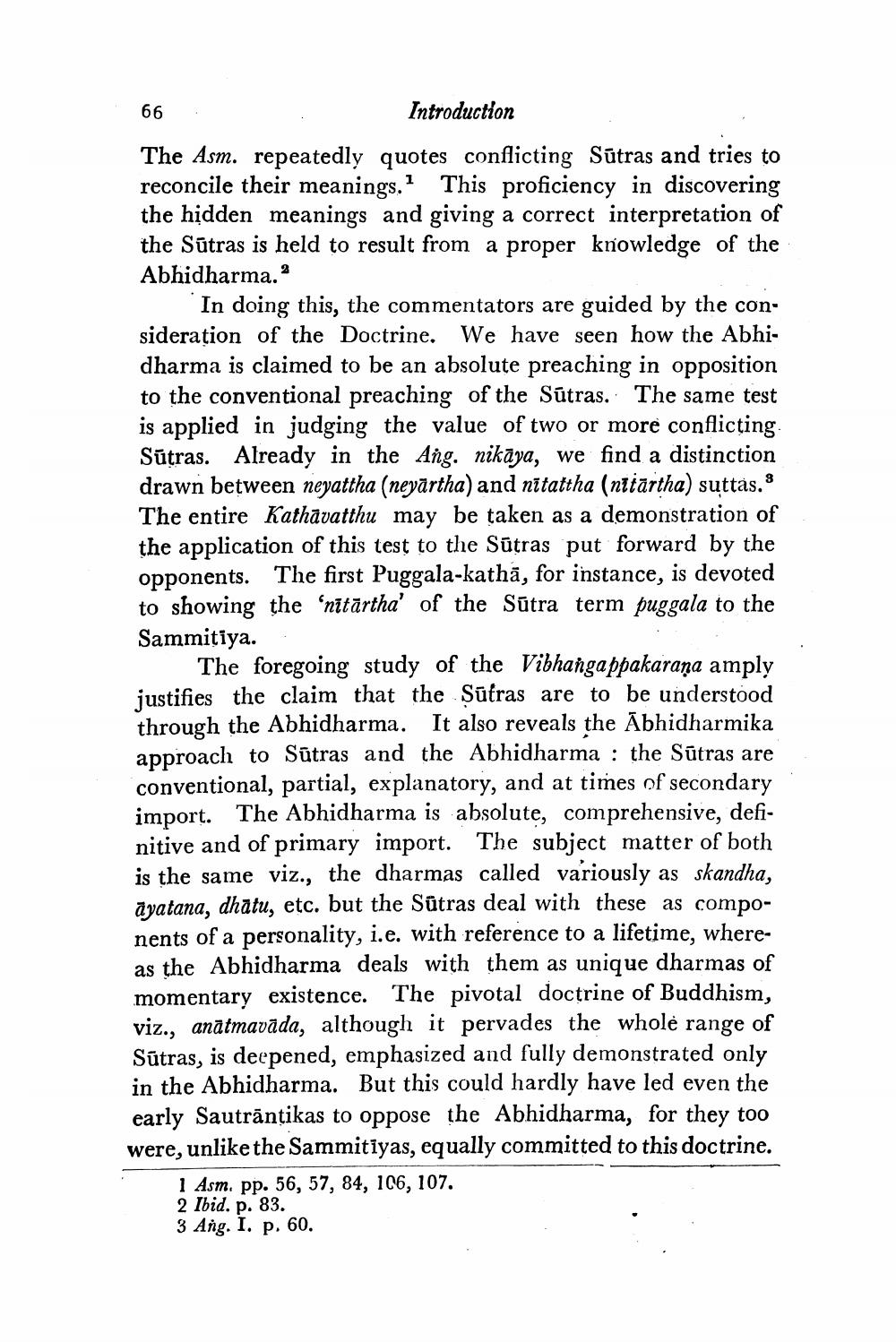________________ 66 Introduction The Asm. repeatedly quotes conflicting Sutras and tries to reconcile their meanings. This proficiency in discovering the hidden meanings and giving a correct interpretation of the Sutras is held to result from a proper knowledge of the Abhidharma." In doing this, the commentators are guided by the consideration of the Doctrine. We have seen how the Abhidharma is claimed to be an absolute preaching in opposition to the conventional preaching of the Sutras. The same test is applied in judging the value of two or more conflicting Sutras. Already in the Ang. nikaya, we find a distinction drawn between neyattha (neyartha) and nitattha (nitartha) suttas. 8 The entire Kathavatthu may be taken as a demonstration of the application of this test to the Sutras put forward by the opponents. The first Puggala-katha, for instance, is devoted to showing the 'nitartha' of the Sutra term puggala to the Sammitiya. The foregoing study of the Vibhangappakarana amply justifies the claim that the Sutras are to be understood through the Abhidharma. It also reveals the Abhidharmika approach to Sutras and the Abhidharma : the Sutras are conventional, partial, explanatory, and at times of secondary import. The Abhidharma is absolute, comprehensive, definitive and of primary import. The subject matter of both is the same viz., the dharmas called variously as skandha, ayatana, dhatu, etc. but the Sutras deal with these as components of a personality, i.e. with reference to a lifetime, whereas the Abhidharma deals with them as unique dharmas of momentary existence. The pivotal doctrine of Buddhism, viz., anatmavada, although it pervades the whole range of Sutras, is deepened, emphasized and fully demonstrated only in the Abhidharma. But this could hardly have led even the early Sautrantikas to oppose the Abhidharma, for they too were, unlike the Sammitivas, equally committed to this doctrine. | Asm. pp. 56, 57, 84, 106, 107. 2 Ibid. p. 83. 3 Ang. I. p. 60.




